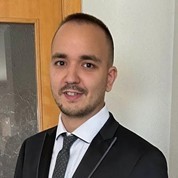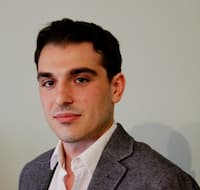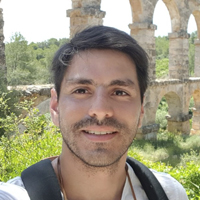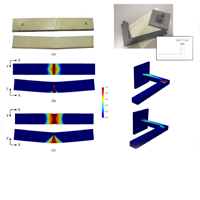events
[Video available] Severo Ochoa Coffee Talk - "Development and implementation of 3D hybrid-Trefftz finite elements to model high-frequency wave propagation in saturated porous media", by Natàlia Climent
ABSTRACT
 One of the main problems one can encounter when modelling wave propagation in saturated and solid media using Finite Element Model (FEM) is the link between the wavelength of the wave and the size of the elements. For example, in the conventional FEM at least 10 finite elements are needed to cover one wavelength. This limitation can be more problematic in porous media because of a secondary compression wave propagating through the fluid with wavelengths of one to two orders of magnitude shorter than the primary compression wave. Hybrid-Trefftz finite elements are non-conventional finite elements which sizes are less restricted by the frequency of the waves being involved, making them more suitable for high frequency wave propagation modelling. Natàlia is going to talk about her work at Instituto Superior Técnico, where she developed and implemented 3D hybrid-Trefftz finite elements for porous (saturated media) and solid elastodynamics. That work was part of the CEN-DynaGEO international research project, which objective was to optimize the seismic wave testing of geomaterials setup and automatize the interpretation of these tests.
One of the main problems one can encounter when modelling wave propagation in saturated and solid media using Finite Element Model (FEM) is the link between the wavelength of the wave and the size of the elements. For example, in the conventional FEM at least 10 finite elements are needed to cover one wavelength. This limitation can be more problematic in porous media because of a secondary compression wave propagating through the fluid with wavelengths of one to two orders of magnitude shorter than the primary compression wave. Hybrid-Trefftz finite elements are non-conventional finite elements which sizes are less restricted by the frequency of the waves being involved, making them more suitable for high frequency wave propagation modelling. Natàlia is going to talk about her work at Instituto Superior Técnico, where she developed and implemented 3D hybrid-Trefftz finite elements for porous (saturated media) and solid elastodynamics. That work was part of the CEN-DynaGEO international research project, which objective was to optimize the seismic wave testing of geomaterials setup and automatize the interpretation of these tests.
SPEAKER CV
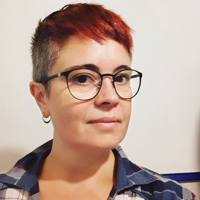 Natàlia Climent is a physicist (Universitat de Barcelona), has a master’s degree in Geophysics (Universitat de Barcelona) and holds a PhD in Geotechnical Engineering (Universitat Politècnica de Catalunya). Her PhD research involved numerical modelling of sand production in oil wells coupling Discrete Element Method and Computational Fluid Dynamics. She has been a research fellow at Instituto Superior Técnico (Lisbon) developing and implementing 3D hybrid-Trefftz finite elements and a postdoctoral research associate at Imperial College (London) implementing computational approaches for fracture modelling in rocks. From September, Natàlia is a postdoctoral researcher at CIMNE (Geomechanics) working in the development of computational approaches to model different soil/structure interactions in offshore installations.
Natàlia Climent is a physicist (Universitat de Barcelona), has a master’s degree in Geophysics (Universitat de Barcelona) and holds a PhD in Geotechnical Engineering (Universitat Politècnica de Catalunya). Her PhD research involved numerical modelling of sand production in oil wells coupling Discrete Element Method and Computational Fluid Dynamics. She has been a research fellow at Instituto Superior Técnico (Lisbon) developing and implementing 3D hybrid-Trefftz finite elements and a postdoctoral research associate at Imperial College (London) implementing computational approaches for fracture modelling in rocks. From September, Natàlia is a postdoctoral researcher at CIMNE (Geomechanics) working in the development of computational approaches to model different soil/structure interactions in offshore installations.


